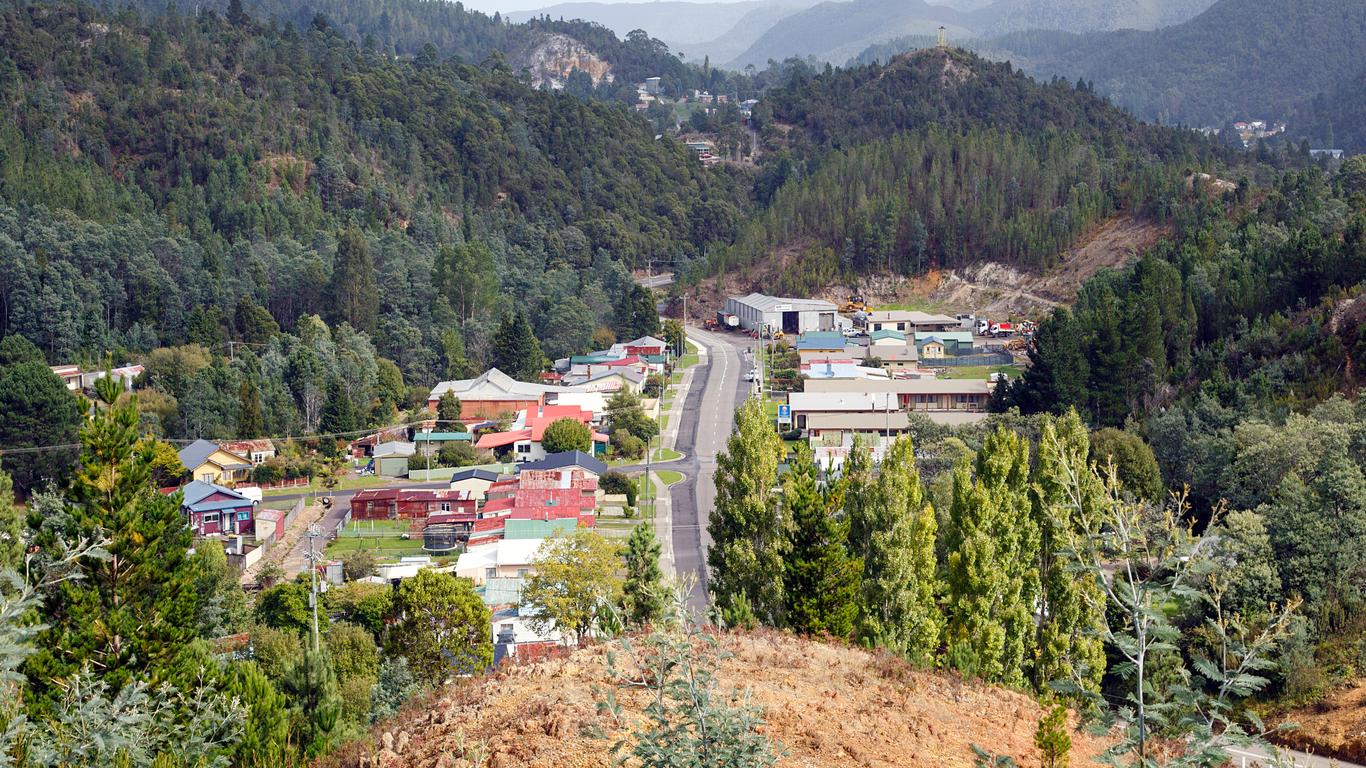Once one of the world’s richest mining towns, Queenstown lies at one end of Tasmania’s West Coast Wilderness Railway. Alluvial gold was discovered here in 1881 and decades of mining have created the bizarre rocky “moonscape” seen today. Central Queenstown is clustered with heritage buildings, including Victorian hotels and an Art Deco theatre.
Things to do in Queenstown
Stroll through Queenstown to admire its historic buildings, which include the 1896 Post Office and the grand Empire Hotel. Also of note is the Art Deco-style Paragon Theatre, a 1933 landmark renowned for its hand-painted floor. Join a guided tour to learn about the theatre’s rich history or coincide your visit with one of its film and dinner nights.
If you’re interested in Queenstown’s fascinating past, head to the Eric Thomas Galley Museum, which occupies the late-19th-century Imperial Hotel. It exhibits mining photographs and vintage cameras collected by Eric Thomas, as well as gems and minerals uncovered in the surrounding mountains. Historic mine relics can also be seen at the early settlement of Lynchford, which is visited on underground mine tours from Queenstown.
One of Queenstown’s most popular attractions is the Ironblow Lookout, which can be reached along a dramatic, switchbacking road that leads from the town centre. It offers spectacular views across an open-cut mine, with mineral deposits streaking its pit walls. Learn about the discovery of gold in these hills back in 1883 before profitable deposits of copper saw Queenstown flourish.
Getting around Queenstown
Queenstown is around 40 minutes’ drive from Strahan and just over 3.5 hours from Hobart Airport. Buses travel from the Tasmanian capital to Queenstown while the town centre is compact enough to explore on foot. The West Coast Wilderness Railway offers scenic journeys between Queenstown and Strahan.





